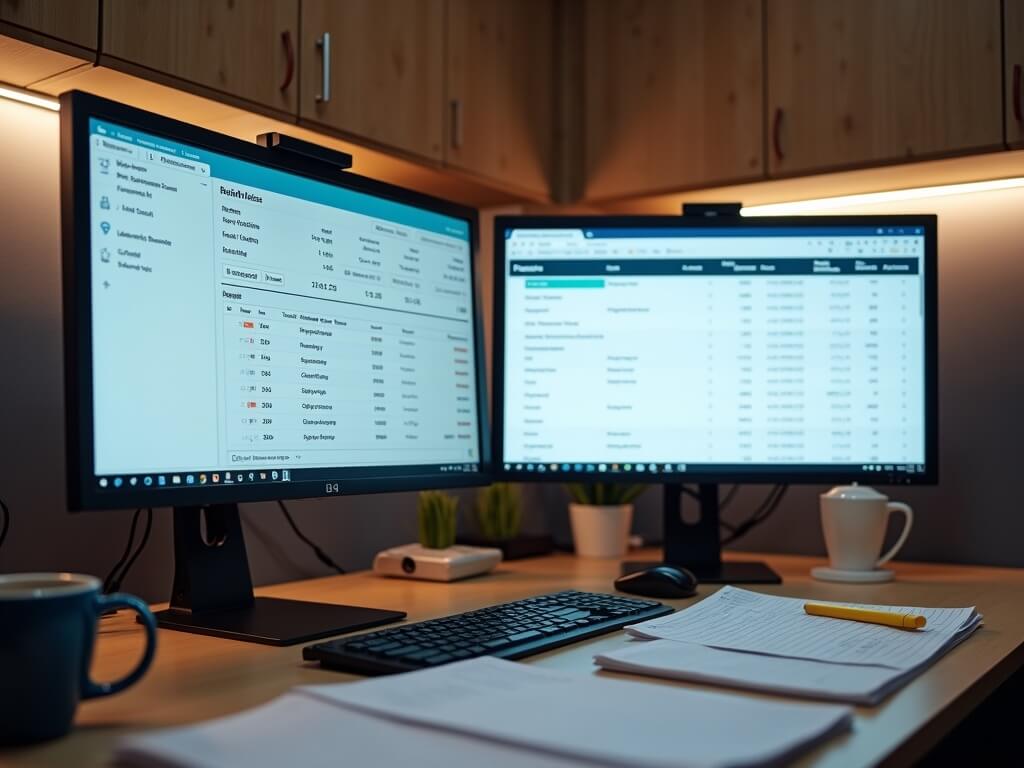If you're running a carwash, bookkeeping probably isn’t your favorite task.
But without clean books, you're asking for headaches with taxes, cash flow issues, and confused investors.
Carwash business bookkeeping touches areas that most small businesses don’t deal with—like cash-heavy transactions, deferred subscription revenue, and expensive equipment that starts losing value the second it’s installed.
Let’s break it down and make it make sense.

Why Bookkeeping Feels Harder Than It Should in the Carwash World
Because it is.
Carwashes are wild beasts compared to other businesses.
You're operating in high volume, short ticket prices, lots of cash and card sales, and you’re often mixing one-off sales with complex revenue streams like monthly plans or gift cards.
That’s why your bookkeeping isn’t just a set of spreadsheets—it’s your survival map.
Here’s who’s actually paying attention to those books:
- You, the owner (you want to sleep at night)
- Your manager (they need to spot leaks)
- Your accountant (they’re trying not to trigger an audit)
- Potential buyers, lenders, or investors (they’re deciding if this business is investable)
Get it wrong, and you’re flying blind.
Get it right, and suddenly your cash flow, growth, and taxes fall into alignment.
Bottom line: Bookkeeping drives decisions.
Not just taxes. Not just to “stay legal.” But to actually know how healthy your operation is.
Quick recap:
- Bookkeeping drives profitability
- It tells you what’s working (and what’s not)
- It’s how you make tax-smart moves with equipment, labor, and subscriptions
Now let’s get into the numbers that actually matter for your carwash.
Carwash Metrics That Tell You the Truth About Your Business
You don’t need to be a CPA to understand your KPIs. You just need to track the right few—and ignore the fluff.
Here are the must-watch metrics for every carwash operator who wants to grow profit:
- Average Revenue Per Car (ARPC)
- Tells you more than gross revenue ever will
- Easy formula: Total revenue ÷ cars washed - Labor Cost as a Percentage of Revenue
- Staff is usually your biggest controllable expense
- Industry average often sits around 25% to 30%, depending on service model - Utility Efficiency Index
- Especially water and power consumption per car
- More efficient = better margins - Customer Retention Rate (for subscriptions)
- Are people sticking with your unlimited plan, or bailing in 3 months? - Net Promoter Score (NPS)
- Want to know how likely customers are to talk about your wash?
- Get your NPS. Low = leaks in the experience.
I try to review these at least monthly with owners. Why? Because you don’t fix what you don’t track.
If you’ve been wondering why cash feels tight even though volume is up—that’s usually an ARPC or labor problem.
The takeaway: If you can't measure it, you can’t optimize it.
Revenue Gets Tricky Fast (If You Miss This…)
Carwash revenue isn’t as simple as “cash in” and “expenses out.”
You’ve got multiple income streams:
- Pay-per-wash payments at the kiosk
- Subscription memberships that are paid upfront
- Detailing or upsells
- Gift cards or pre-paid washes
This is where most operators get tripped up.
Let’s take subscriptions.
Say you sell 100 unlimited plans at $30 each. That’s $3,000 collected.
But how much of that is actually “earned” this month?
Not all of it—and this is where the IRS wants you to be precise.
How Should Subscription Wash Revenues Be Recorded Monthly?
You record that money as a liability first. That’s called “unearned revenue.” Only after the month goes by (or the wash is actually used) do you count it as real revenue.

What does that look like in real books? Let me give you a live example.
One of our clients in Georgia sells an annual family plan for $1,200.
We log that entire amount to “Unearned Revenue” the day it’s paid—it hits their cash, yes, but doesn’t show up on the income statement yet.
Each month, our system automatically releases $100 to “Wash Revenue” until we hit the full $1,200.
That way:
- Income aligns with service delivery
- Financials are more accurate month-to-month
- No audit flags when IRS compares bank deposits to income reported
By the end of the year, it all evens out.
Here’s how the journal entry looks each month:
- Debit: Unearned Revenue $100
- Credit: Wash Sales Revenue $100
If you’re not doing this yet—fix it at your next close.
Fast tip:
- Always support these entries with usage or membership data
- Align your system with ASC 606 rules on revenue recognition
Key takeaway: If you recognize subscription revenue when cash comes in, you’re over-reporting income and putting yourself at audit risk.
Want to get ahead? Set up automation for monthly recognition inside your accounting software. Works beautifully with cloud-based tools.
Big Machines. Big Write-Offs... If You Do It Right
Let’s talk equipment depreciation.
Your carwash equipment isn’t cheap. Wash systems, POS terminals, vacuums, water reclaim units—they add up fast.
But here’s something most owners don’t realize:
If you account for depreciation wrong, you’re giving up major tax savings.
Depreciation is how you allocate the cost of those assets over their useful life.
There are two ways to play this:
Straight-line depreciation:
- Clean and easy
- Equal deduction each year
- Example: $100K machine with a five-year life = $20K expense per year
Accelerated depreciation:
- Front-loads your tax deductions
- Methods like double-declining balance, SYD, MACRS
- Great for cash flow early on
And then—and this is where the real money moves happen—you’ve got two big tax tools:
- Section 179 expensing
- Bonus depreciation
These let you write off certain equipment purchases immediately, instead of expensing them over time.
Personal story here:
I once worked with a client who had bought $450K worth of new tunnel equipment at the worst time of year: November.
Dead zone for carwashes in the Midwest.
But because we set them up for Section 179 AND bonus depreciation, they got to write off nearly the entire amount that year.
Made their taxable income nearly zero.
The IRS allowed it because the gear was in use before year-end, and we had all the schedules lined up.
That one move saved them tens of thousands.
Bottom line?
Depreciation is more than accounting. It’s a strategic tax weapon—if you document it correctly.
Quick checklist:
- Use MACRS for tax returns
- Consider straight-line for internal books (simplifies EBITDA reporting)
- Explore cost segregation studies if property buildout exceeds $500K
- Always maintain asset schedules that show:
- Purchase date and amount
- Expected life
- Annual depreciation
- Book value
You never know when a lender, buyer, or auditor will ask for it.
Takeaway: The right depreciation strategy protects cash, lowers taxable income, and keeps your P&L clean.
Cash Now, Revenue Later. Know the Difference or Get Burned
Customers love prepaid plans.
They throw down their card, get unlimited washes, and forget about it.
You get a nice cash boost—but it’s technically not all yours yet.
Think like this:
- It’s cashflow on Day 1
- But revenue recognized over time
This mismatch is what causes confusion when operators say, “I don’t understand—sales are up, but I have less profit.”
Often, the problem is timing.
Fix that, and your books start telling the truth.
Next up: We’ll dive into the red-hot power of cost segregation.
Think: how to slice up your property into faster-depreciating pieces and legally reduce your tax bill by over 80%.
But first… let this part sink in.
Related Resources
How Cost Segregation Can Slice Six Figures Off Your Tax Bill… Without Lying
This part blows people’s minds the first time I explain it.
You don’t depreciate one “carwash.” You depreciate the materials inside it.
Enter: cost segregation.
Let me explain with a quick story.
A client of ours recently bought a fully built automated wash—about $3.7 million all in.
If you depreciate that as one building over 39 years? You’re stuck writing off maybe $94K per year.
But we brought in a certified cost segregation expert, and guess what?
We reclassified $2.1M of the property into 5-, 7-, and 15-year property.
That meant he got over $1.6M in bonus depreciation in Year 1.
That move alone cut their tax bill by nearly $500K.
Real tax savings. All by properly identifying what parts of the buildout depreciate faster:
- Electrical for equipment vs. general building
- Specialized concrete pads
- Piping systems just for the wash equipment
- Lighting and signage
- Site work like paving or drainage systems
This strategy is IRS-compliant. Not shady, not aggressive. But you do need a proper study supported by engineers or CPAs trained in cost segregation.
If your property improvements are over $500K, you’re leaving a fortune on the table without this.
Key takeaways:
- Buildings depreciate slowly (39 years)
- Equipment, plumbing, paving? Faster (5 to 15 years)
- A professional cost seg study can unlock huge deductions immediately
- You’ll need to maintain detailed asset schedules for compliance
And here's the kicker: if you’ve never done a study on an older property, you can still do a “look-back” study and catch up depreciation in the current year.
No amended returns required.
That’s what we helped one client do—claim $324K in missed depreciation from a 6-year-old express site in one swoop.
Depreciation is math. Cost segregation is strategy.
Dial in both, and your carwash becomes a tax-savvy machine.

Plug the Expense Leaks Before They Drain Your Profits
Quick question: When’s the last time you did a line-by-line review of last month’s operating expenses?
Yeah, that long?
You might be bleeding five figures a year in unnoticed waste.
Typical suspects I’ve seen eat margins:
- Equipment repairs auto-approved without review
- Subscriptions stacking up (chemical or CRM vendors love this)
- Utility spikes that go unresolved for months
- Over-ordering supplies due to poor inventory tracking
Set a rule: All expenses deserve a paper trail.
Every month, match:
- Receipts to ledger entries
- Utility bills to past averages
- Vendor invoices to contracts or quotes
One client I worked with was paying almost $700/month to a pest control company they thought had canceled two years earlier.
No one noticed—the payment had been set to autopay.
Your bookkeeper’s job is to record. Your job is to review.
Want clean reporting?
- Tag your expenses correctly by category (admin, operations, repairs, etc.)
- Use accounting software that tracks vendors and line items
- Run monthly comparisons to spot scary trends
Also, remember: good records = good taxes.
If you can’t document an expense, don't try writing it off.
Pro tip? We ask clients to tag any nonrecurring expense with a “one-time” label. Makes EBITDA normalization 10x easier for buyer conversations.
Summary:
- Stay on top of your monthly reconciliation—at least look at it
- Over-document, under-assume
- Every line on your P&L should have a paper trail or digital equivalent
Cash-Heavy Business? Here’s How to Keep the IRS Off Your Back
Let’s address the elephant in the bay.
Most carwashes are still semi-cash-intensive—even with POS systems in place.
That alone puts a spotlight on you come tax time.
The IRS knows places like carwashes, salons, and small food operators can... “forget” to report all cash inflows.
You don’t want to be on that radar.
So here’s how to bulletproof your operation:
- Use daily car count and average ticket reports to cross-reference sales
- Reconcile daily bank deposits vs. POS reports—look for gaps
- Set documented cash handling protocols for all team members
- Rotate closing shifts so no one has end-to-end control
- Save everything—yes, even the physical tickets from your car counter or camera logs
“The best way to avoid an audit is to make it easy to verify your numbers.” — IRS Agent
If your POS allows it, separate sales by type:
- Cash
- Credit card
- Prepaid
- Gift card redemption
Also: Get those daily summary sheets signed and saved. Your future self will thank you.
IRS Tip: If your cash sales vary dramatically from your expected car count times ARPC, it’ll set off flags.
Protect your six by making sure your reporting is consistent and defensible.
Tech’s Not Just Shiny—It Saves You Money If You Use It Right
Let’s talk tech.
Carwash owners love upgrading vacuums and bays.
But too many are still using spreadsheet-based books like it’s 1999.
Don’t be that guy.
Today’s cloud-based bookkeeping tools do way more than track income.
They can:
- Automate revenue recognition from memberships
- Sync with your car counter data and POS
- Track subscription churn and usage metrics
- Flag expense anomalies month over month
- Share real-time dashboards with your CPA or advisor

Platforms like QuickBooks Online, Xero, and Sage now have add-ons or integrations that pull in wash data directly.
One of our California-based clients runs five locations. We linked their customer portal (with Stripe + CRM) to auto-feed into QuickBooks—splitting revenue into earned/unearned without touching a button.
The result?
Their books close in 3 business days—fully reconciled with sales, deposits, and deferred revenue handled.
That speed turned their financing meeting with a commercial lender into a walk in the park.
Takeaway: Modern accounting tech pays for itself in time saved, errors avoided, and insights gained.
Key financial metrics every car wash owner should track
So… How Often Should You Really Close Your Books?
This one’s simple, but often misunderstood.
Close your books monthly.
Not quarterly. Not “when tax time comes.”
Every. Single. Month.
Why?
- Error correction is easier (catch it sooner)
- Cleaner reporting = faster decision-making
- More trust with banks, partners, and buyers
Bonus: it forces your team to stay disciplined.
Each month, review:
- Subscription revenue vs. actual usage
- Expense categories growing faster than expected
- Labor as a % of revenue
- ARPC trends by location, shift, or promo
Build this muscle, and tax prep becomes a breeze—because you’ve already done the work, bit by bit.
Don’t be the owner hunting down receipts next April.
Finish each month clean, and sleep through every tax season like a baby.
The Wrap-Up: Clean Books = Better Business (And Less IRS Drama)
Running a carwash isn’t easy.
You’ve got weather, staffing, equipment, cash issues, seasonal swings—and all that before the IRS shows up.
But here’s the truth:
If you handle your books right, they become your most valuable weapon.
They help you:
- Maximize tax strategy (through depreciation, equipment depreciation calculation strategies, cost segregation, expenses)
- Understand real profitability across varied revenue streams
- Create investor-friendly reports
- Sleep better during audit season
Carwash business bookkeeping isn’t just for compliance.
It’s your playbook.
So whether you’re building your first tunnel or adding a fourth site, get serious about:
- Monthly subscription revenue recognition
- Strategic equipment depreciation planning
- Bulletproofing cash controls
- And automating with smart systems
If it all feels like too much… get help. Not guessing is better than making a fast mess.
Our team at Invantage3 specializes in helping carwash owners clean up their books, lock in tax-smart strategies, and scale with confidence.
Need guidance on car wash depreciation schedules or monthly workflows?
Let’s talk.
425-408-9992
info@invantage3.com
Carwash business bookkeeping—when done right—isn’t just a necessity. It’s a competitive advantage.
More resources to explore:
Let's Talk: Schedule a
Consultation Today!



